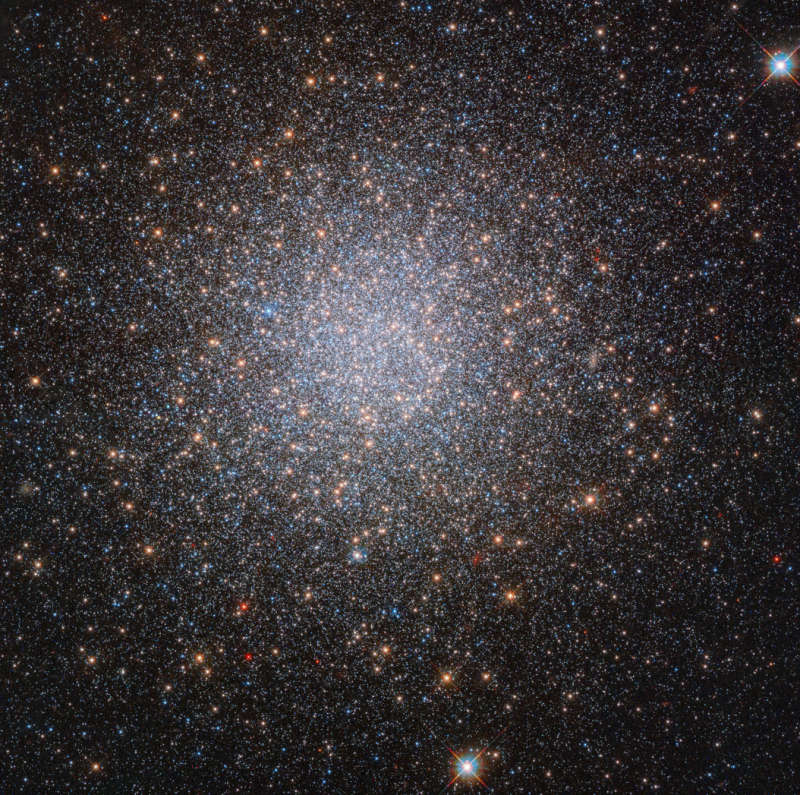Explanation: Stars of the globular cluster NGC 2419 are packed into this Hubble Space Telescope field of view toward the mostly stealthy constellation Lynx. The two brighter spiky stars near the edge of the frame are within our own galaxy. NGC 2419 itself is remote though, some 300,000 light-years away. In comparison, the Milky Way's satellite galaxy, the Large Magellanic Cloud, is only about 160,000 light-years distant. Roughly similar to other large globular star clusters like Omega Centauri, NGC 2419 is intrinsically bright, but appears faint because it is so far away. Its extreme distance makes it difficult to study and compare its properties with other globular clusters that roam the halo of our Milky Way galaxy. Sometimes called "the Intergalactic Wanderer", NGC 2419 really does seem to have come from beyond the Milky Way. Measurements of the cluster's motion through space suggest it once belonged to the Sagittarius dwarf spheroidal galaxy, another small satellite galaxy being disrupted by repeated encounters with the much larger Milky Way.
1999 2000 2001 2002 2003 2004 2005 2006 2007 2008 2009 2010 2011 2012 2013 2014 2015 2016 2017 2018 2019 2020 2021 2022 2023 2024 2025 |
Yanvar' Fevral' Mart Aprel' Mai Iyun' Iyul' Avgust Sentyabr' Oktyabr' Noyabr' Dekabr' |
NASA Web Site Statements, Warnings, and Disclaimers
NASA Official: Jay Norris. Specific rights apply.
A service of: LHEA at NASA / GSFC
& Michigan Tech. U.
|
Publikacii s klyuchevymi slovami:
globular cluster - Sharovoe skoplenie
Publikacii so slovami: globular cluster - Sharovoe skoplenie | |
Sm. takzhe:
Vse publikacii na tu zhe temu >> | |
